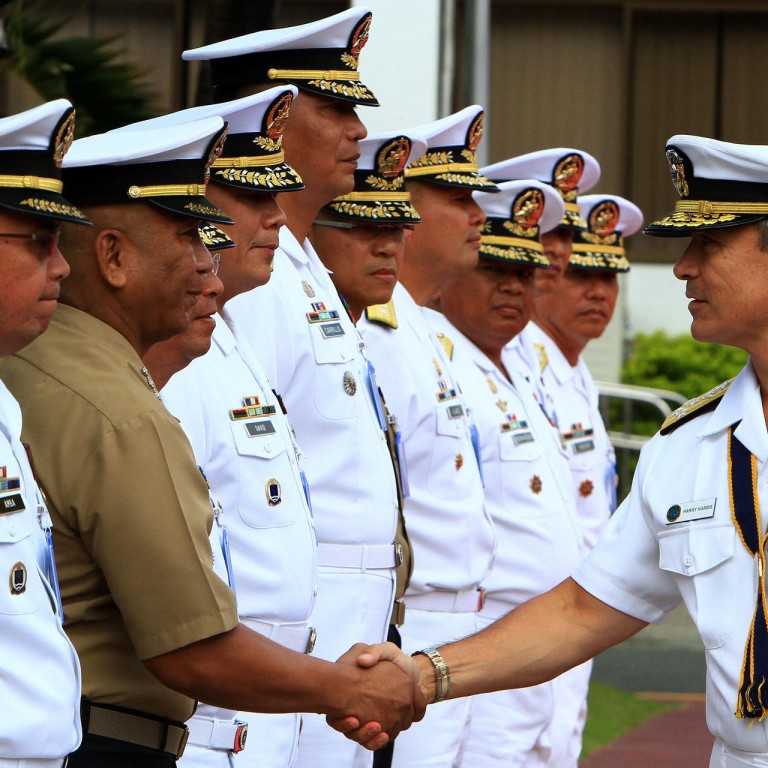
US moves closer to reviving bases in Philippines as part of focus on Asia
Pacific Fleet commander in Manila for talks as next phase of American 'pivot' towards Asia takes key step of setting up troops agreement
The US Pacific Fleet commander arrived in Manila yesterday as momentum gathered to finalise an agreement that would see an expanded US military presence in the Philippines.
With the US pressing ahead with its "pivot" to Asia, Admiral Harry Harris is expected to use his first official trip to the Philippines to discuss a deal which would allow United States troops to be rotated around the country in bigger numbers and in more areas.
"Admiral Harris plans to use this opportunity to discuss the strong and enduring relationships between the US and Philippine navies, the implications of the US military's rebalance to the Pacific, and the importance of naval engagement and co-operation for humanitarian assistance and disaster relief," the US embassy in Manila said yesterday.
There is an American camp within a Philippines base and it is jointly controlled
Harris will meet senior embassy and military officials during his visit.President Benigno Aquino hinted last week that Manila and Washington were "very, very close" to signing an agreement and he had not "been presented major sticking points".
Negotiations are set to resume early next month. However, a source said a final agreement was being held up as Manila insisted on having access to all temporary American facilities, while at the same time turning down a request to allow the US to set up bases outside Philippines camps.
The source explained: "The problem is, the US wants complete control including flying the US flag alone in certain areas. That would lead to a constitutional challenge."
The Philippines constitution requires a treaty to be forged with the US before the latter can set up stand-alone facilities.
Defence chief Voltaire Gazmin said as much in November, insisting the US had to accept full Philippines control and access to any American facility. Yesterday, Gazmin's spokesman declined to comment on whether this particular issue had been resolved.
Explaining the current legal status of the US presence in the country, Ramon Casiple, executive director of the Institute of Political and Electoral Reforms, said "there is an American camp within a Philippines base and it is jointly controlled by the American and the Philippines commanders".
While in theory that means a Philippines commander can go into the US camp at any time, he said that in reality "the US guard will not let anybody go into the American camp without permission from the American camp commander".
Casiple said one solution being considered was the Philippines establishing a base in Subic Bay, which would be used by the Americans.
Subic Bay is a former US naval base facing the South China Sea which the US abandoned in 1992 after the Philippines demanded a formal agreement on bases be established.
Among the sticking points then was Manila's demand to try US personnel for serious crimes such as rape and murder.
US ambassador to Manila Philip Goldberg said yesterday an "increased rotational presence" of the American military would, among others, "bring greater security within the region".
Goldberg said part of the discussions involved agreeing on "several locations" but he would not say where.
He also described as "very important" the island province of Palawan, which exercises political jurisdiction over the islands claimed by the Philippines in the South China Sea.
He also would not say whether a deal would be signed in time for the state visit of US President Barack Obama in April.
Gazmin would not be tied down to that schedule either.
He said among the points that still needed to be settled were "the language and... how long they [the US troops] will stay...it's like both sides are haggling."

